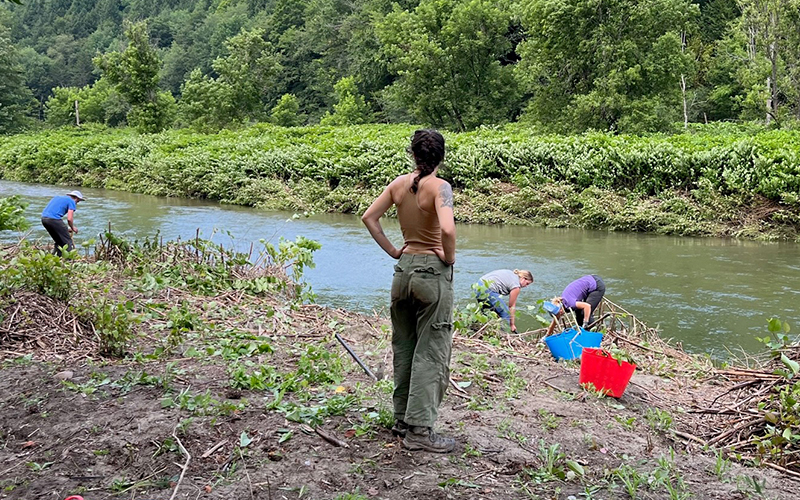The Valley Reporter reached out to the Waitsfield, Warren, and Fayston Conservation Commissions following last week’s storms to learn whether the high levels of the Mad River caused further spread of Japanese knotweed, the invasive plant that can be found along the river.
“We have seen significant increased erosion due to recent flooding especially in some knotweed-infested areas. All this flooding is making this knotweed summer all the more challenging, and it certainly is increasing the spread of new knotweed material into the rivers. We do plan to do a major walk down the Mad once the water has dropped enough, to 1) see where the loose knotweed has drifted and where it landed, and 2) to collect as much of the loose material as we can so it doesn't sprout anew,” said Jito Coleman of the Warren Conservation Commission, which has led the way in local efforts on knotweed management.
However, Waitsfield Conservation Commission chair Curt Lindberg said last week’s storms didn’t appear to have caused major knotweed spread in the town. “I don't believe the storm caused any significant knotweed spread along the river because it did not breach its banks. If it did there would have undoubtedly been knotweed root crowns and rhizomes deposited in the flood plain,” said Lindberg.
The Waitsfield Conservation Commission, which organizes volunteers and interns’ efforts to manage knotweed on Thursdays, adjusted the timing of last week’s session and the eight UVM interns’ hours to fit in between rain events. “And it worked -- no rain,” Lindberg said.
The Fayston Conservation Commission joined Warren and Waitsfield’s efforts to manage knotweed along the Mad River this summer. The three towns are sharing eight UVM interns dedicated to this project, along with many volunteers. “The UVM interns met at the Fayston town office on Wednesday, July 12, for their third day working in Fayston. We had a productive afternoon cutting knotweed along North Fayston Road and revisiting previously managed sites on German Flats. The interns finished the day on Old Duxbury Road together with our community volunteers, where we cut and dry stacked knotweed on four pallets,” said Andrea Henderson of the Fayston Conservation Commission.
The next Fayston community knotweed workday is scheduled for next Wednesday, July 26, 4 to 6 p.m. meeting at Chase Brook Town Forest. Contact Lindberg in Waitsfield at













